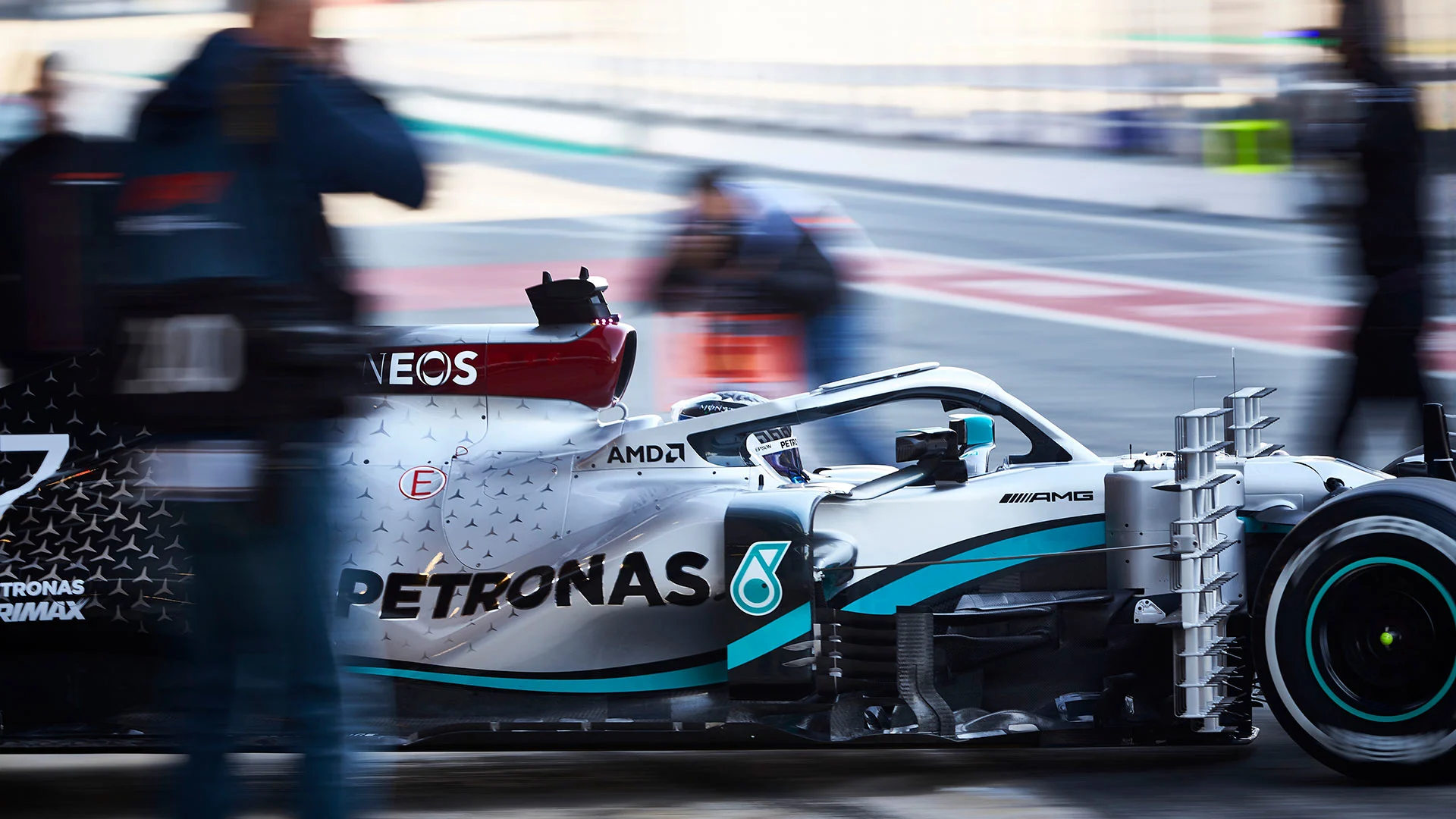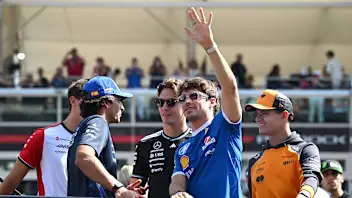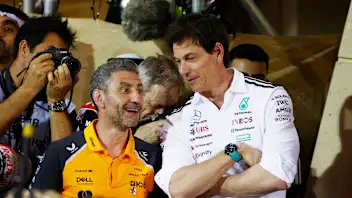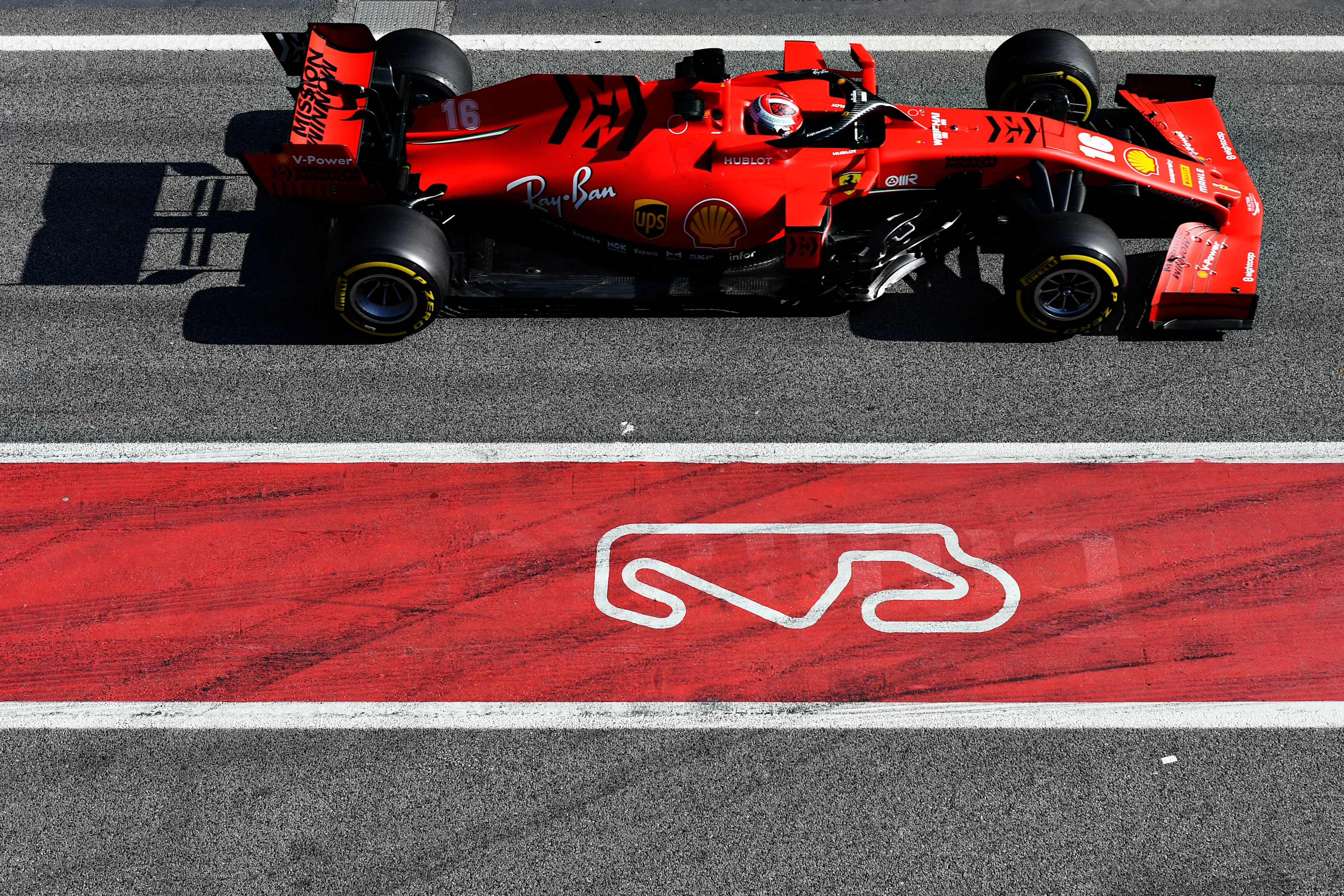Throughout 2020 F1 winter testing in Barcelona, we’ll be bringing you insights into what happens during pre-season running from former Ferrari and Williams technical whizz Rob Smedley, and ex-Renault F1 driver Jolyon Palmer. First up, Rob kicks things off for us with an obvious question: what will the teams actually be doing on day one of the Barcelona tests?
To get to the actual moment of the car driving out of the garage takes days of preparation in Barcelona. Once the car’s in Spain, the teams will usually arrive as late as possible before the test begins. The fully built chassis and bodywork might come later, which you've then got to assemble at the track. It’s a hive of activity really. You've got 100-plus people all working to get the car ready for the first day, and that might be a 24-hour shift system at the circuit in the days leading up to the start. It’s not like we arrive at the circuit at 6am on the first day of the test and ready to run at 9am!
READ MORE: Russell – Being first out in testing ‘psychologically’ important for Williams

When the first day rolls around, the level of the team will then tend to determine what their day one of testing looks like. A lot of the bigger teams will have done filming days beforehand, and the principal purpose of those is to do systems checks. Of course, there’ll be some filming involved as well, but really, it’s a systems check, an old fashioned shakedown, and that will happen in the days leading up to test one. The other things top teams will usually have made use of over the winter are full-car dynos. That means the full car – the power unit, drivetrain, suspension – will all have already run for thousands of kilometres.
READ MORE: ‘I’m finally back home’ says Kubica after starting Alfa Romeo role
For some of the teams in the midfield and towards the back of the grid who don’t have that type of R & D [Research and Development] facility, day one, test one might be the first time they’ve run, meaning that pretty much all of day one will be their systems check. In Formula 1 terms, that means doing some very, very basic stuff, checking all of the various systems around the car: the power unit, the transmission system, the suspension system, the hydraulics, the electronics. The teams will have multiple experts in charge of all of those different areas, both at the track and back at the factory, and it’s up to those guys to be monitoring their bit.
They’ll have a series of tests they want to get through, and it’s just about being methodical, ticking things off their checklists and making sure there’s that diligence to get through it all so that you get to the end of day one and say, ‘Great, the car runs’. Then from there, you’ll move it up a gear and get onto other things. It’s a really intense period because, for each expert, this is the birth of their bit, which in turn is part of the birth of the total car.
READ MORE: 10 things to watch for in Week 1 of 2020 pre-season testing
When you actually get your car on track at 9am on the first day of testing, it’s a huge achievement, and you have this momentary sense of euphoria. ‘Yes! We've got our car out the door, it’s running, it’s done its first installation lap’. And then that disappears and it’s onto the next thing.
This article originally appeared on F1.com on February 18 2019
Next Up
Related Articles
 14 drivers from different eras who raced together in F1
14 drivers from different eras who raced together in F1 Verstappen on what he would never do as an F1 team boss
Verstappen on what he would never do as an F1 team boss F1 drivers who bounced back after dropping off the grid
F1 drivers who bounced back after dropping off the grid Williams confirm Martins as test and development driver
Williams confirm Martins as test and development driver All the 2026 F1 driver numbers confirmed in full
All the 2026 F1 driver numbers confirmed in full Who are the 2026 Team Principals?
Who are the 2026 Team Principals?
